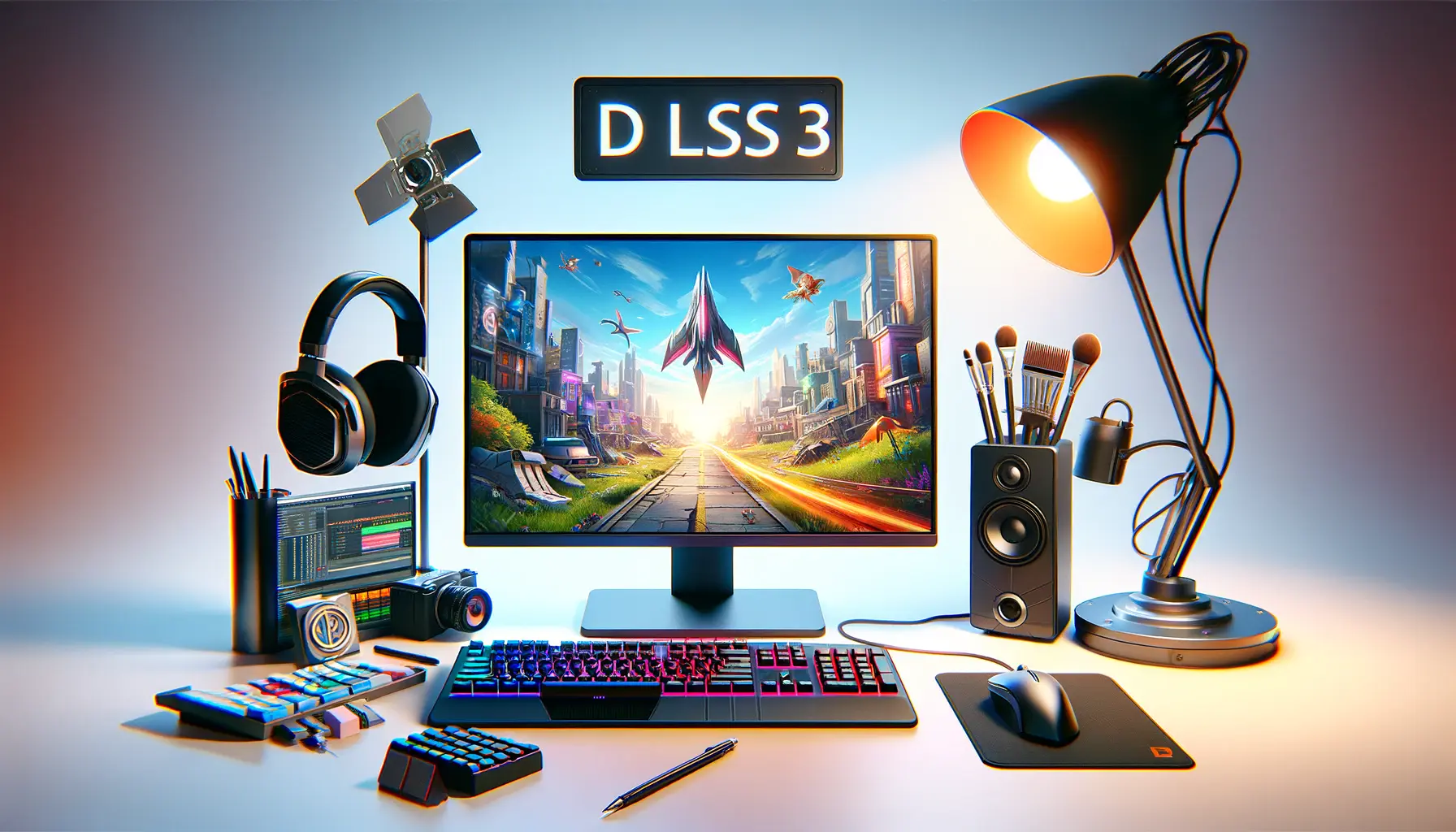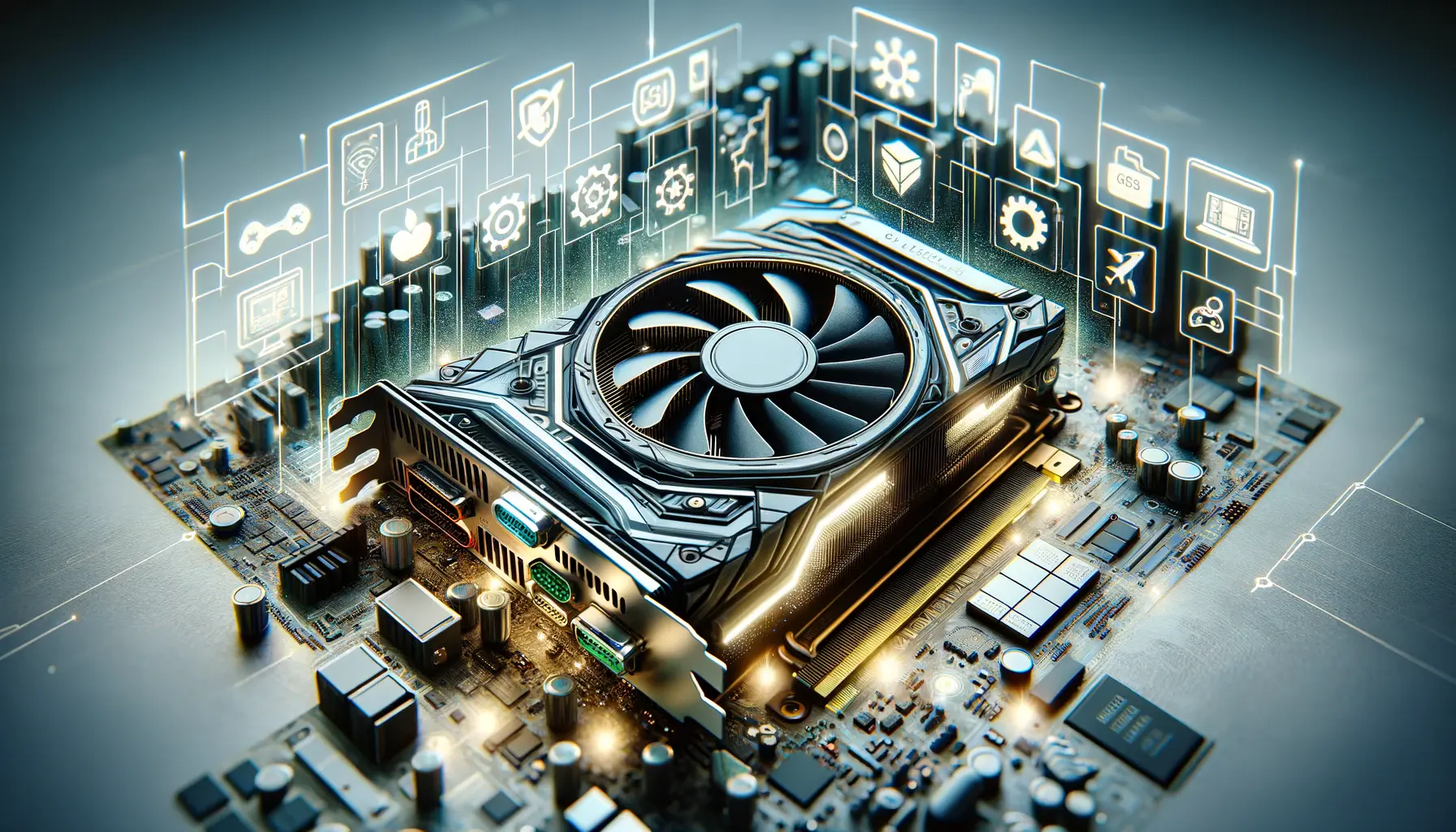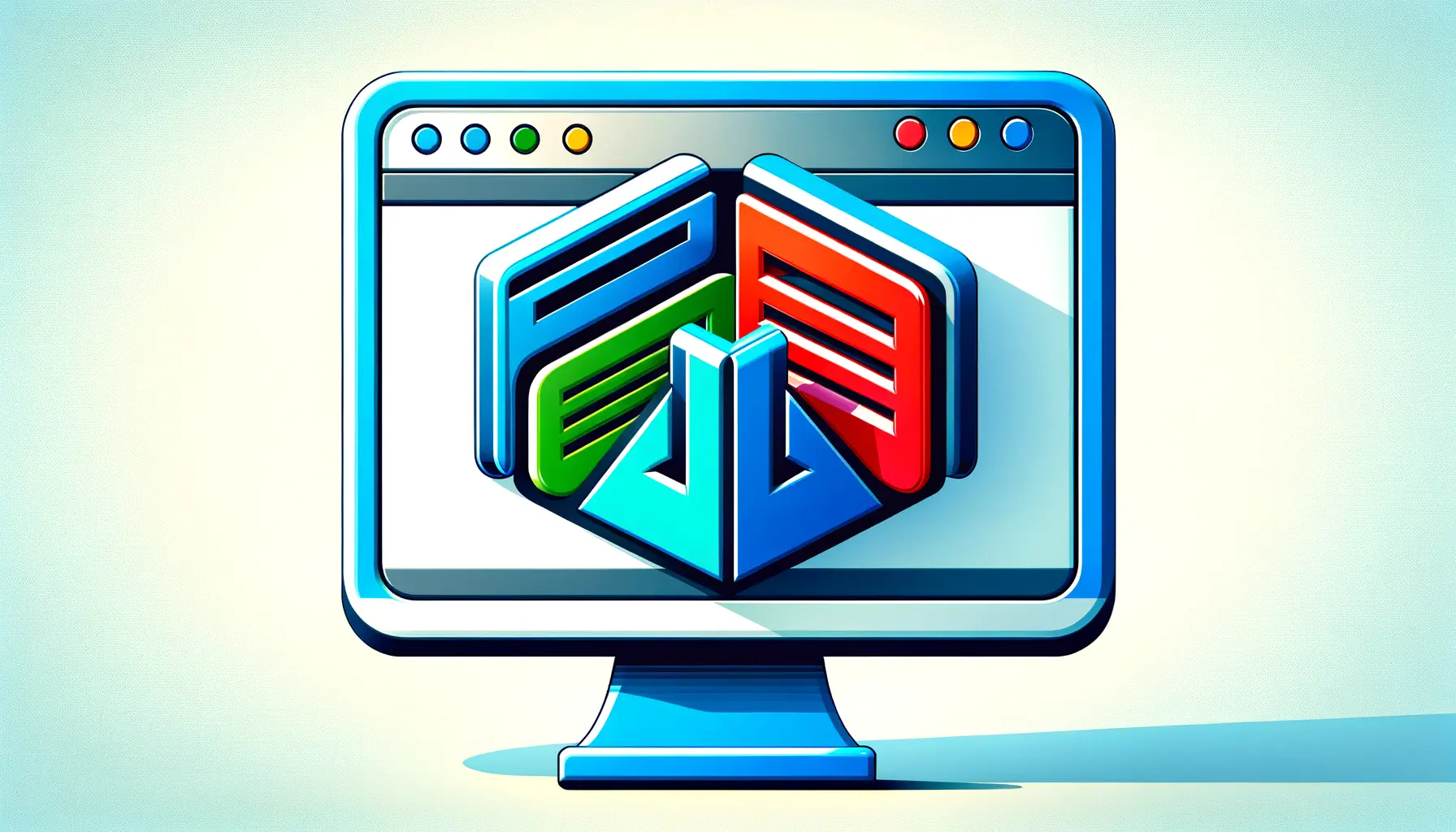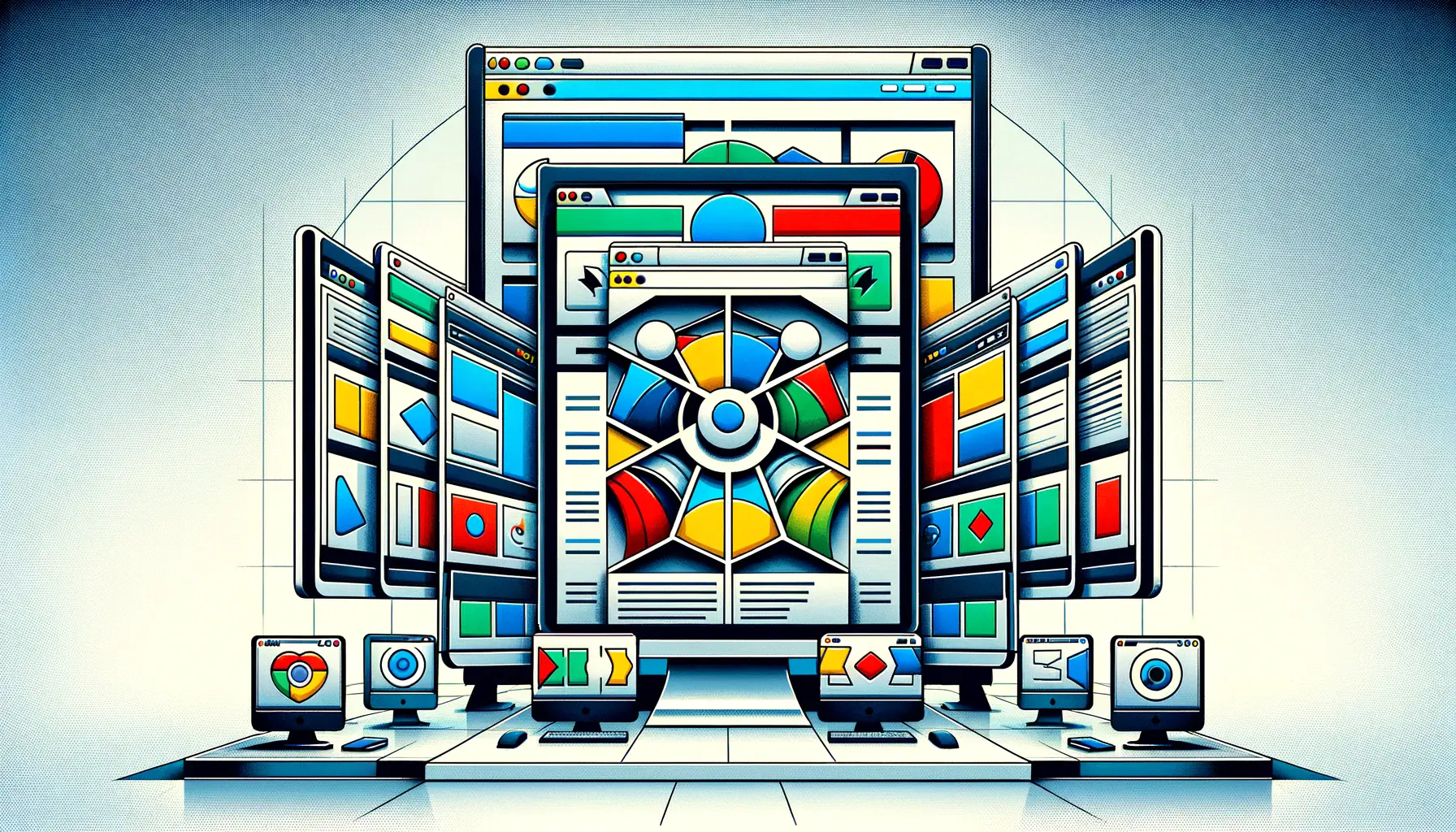The advent of NVIDIA’s DLSS 3 has marked a significant milestone in the realm of gaming and graphic rendering, promising to revolutionize the way we experience visual content on our screens.
Deep Learning Super Sampling, or DLSS, utilizes artificial intelligence to upscale images in real-time, delivering higher frame rates without compromising on the visual quality.
This technology, particularly its third iteration, has been a game-changer for gamers and professionals alike, offering unprecedented performance improvements across a variety of applications.
However, as with any pioneering technology, DLSS 3 faces its share of challenges, particularly in terms of software compatibility.
Understanding the intricacies of DLSS 3 requires a deep dive into its operational framework and the compatibility issues that have emerged.
As a cutting-edge technology, DLSS 3 leverages the tensor cores found in NVIDIA’s RTX series GPUs, but its deployment has not been without hurdles.
The promise of DLSS 3 extends beyond mere performance enhancement; it aims to redefine image quality and gaming immersion.
Yet, the path to universal adoption is fraught with technical complexities and software integration challenges that need addressing.
- Exploring DLSS 3 Technology
- Understanding Software Compatibility Issues
- Impact on Game Development and Performance
- DLSS 3 in Action: Real-World Applications
- Challenges and Solutions for Developers
- Consumer Perspectives and Feedback
- Future Directions and Potential
- Embracing the Future with DLSS 3
- DLSS 3: Frequently Asked Questions
Exploring DLSS 3 Technology
What is DLSS 3?
At its core, DLSS 3 is NVIDIA’s proprietary AI-driven technology designed to boost game performance and visual fidelity.
By employing advanced deep learning algorithms, DLSS 3 analyzes and upscales lower-resolution images in real-time, enabling games and applications to run at higher frame rates while maintaining or even improving image quality.
This process not only enhances the gaming experience but also allows for more efficient GPU usage, making high-end gaming accessible to a broader audience.
The technology’s reliance on AI and machine learning sets it apart from traditional upscaling methods.
DLSS 3 dynamically adjusts its upscaling techniques based on the content being rendered, ensuring optimal performance across different scenarios.
This adaptability is crucial for maintaining visual quality, especially in fast-paced or graphically intensive games.
Compatibility Challenges
Despite its advantages, DLSS 3’s rollout has encountered compatibility issues that have limited its adoption.
One of the primary challenges lies in the hardware requirements.
DLSS 3 is designed to work exclusively with NVIDIA’s RTX series GPUs, which are equipped with the necessary tensor cores for AI processing.
This hardware specificity means that a significant portion of the gaming community, particularly those with older or non-NVIDIA graphics cards, cannot benefit from DLSS 3’s enhancements.
Furthermore, software integration poses another hurdle.
Game developers must actively incorporate DLSS 3 into their titles, a process that requires access to NVIDIA’s SDK and a willingness to invest in the necessary development resources.
This has led to a somewhat limited library of DLSS 3-compatible games, although the list is gradually expanding as more developers recognize the technology’s benefits.
DLSS 3 represents a significant leap forward in gaming technology, but its full potential is yet to be realized due to hardware limitations and software integration challenges.
Understanding Software Compatibility Issues
The journey of DLSS 3 from a promising technology to a widely adopted game-changer is hindered by several software compatibility issues.
These challenges not only affect the end-user experience but also impact developers’ ability to integrate this advanced technology into their games.
Understanding these issues is crucial for both consumers and creators in the gaming industry.
Software compatibility with DLSS 3 spans a range of considerations, from the technical specifics of game engines to the broader ecosystem of gaming platforms.
The intricacies involved in making a game DLSS 3-compatible can be daunting, especially for smaller development teams with limited resources.
Game Engine Integration
- Adaptation to New Technology: Game engines need to be specifically adapted to leverage DLSS 3’s capabilities. This adaptation requires close collaboration with NVIDIA, access to the DLSS SDK, and a deep understanding of the engine’s rendering pipeline.
- Performance Optimization: Integrating DLSS 3 involves balancing performance gains with visual fidelity. Developers must fine-tune the DLSS settings to achieve the desired outcome, which can vary significantly from one game to another.
Developer Resources and Support
- Access to NVIDIA’s SDK: Obtaining and utilizing NVIDIA’s SDK for DLSS 3 integration is a prerequisite. However, this can be a barrier for indie developers or smaller studios without the necessary connections or technical expertise.
- Technical Support: Effective integration of DLSS 3 requires ongoing support from NVIDIA, including documentation, best practices, and troubleshooting. The level of support available can significantly influence a developer’s ability to implement DLSS 3 successfully.
Compatibility with Gaming Platforms
- PC Gaming: DLSS 3 is primarily designed for PC gaming, leveraging the power of RTX GPUs. Its compatibility issues are mostly confined to this platform, with varying degrees of support across different hardware configurations and drivers.
- Console Considerations: While DLSS technology has begun to make its way into the console domain, DLSS 3’s specific features and benefits are currently not available on these platforms. This limitation is due to the proprietary nature of console hardware and the closed development ecosystems.
The path to widespread DLSS 3 adoption is paved with technical, resource-related, and platform-specific challenges. Overcoming these hurdles requires concerted efforts from NVIDIA, game developers, and the broader gaming community.
Impact on Game Development and Performance
The introduction of DLSS 3 into the gaming ecosystem has not only presented compatibility challenges but also opened up new avenues for game development and performance optimization.
The technology’s ability to significantly boost frame rates while maintaining high visual fidelity has implications for both developers and gamers.
This section explores how DLSS 3 is shaping the future of game development and the performance landscape of modern gaming.
For developers, DLSS 3 offers a toolset that can dramatically enhance the visual quality of games without the traditional trade-offs associated with high-resolution rendering.
For gamers, it means smoother gameplay experiences, even on hardware that would otherwise struggle to maintain performance with advanced graphical features enabled.
Enhanced Visual Fidelity and Performance
- Higher Frame Rates: By intelligently upscaling lower-resolution images, DLSS 3 allows games to run at higher frame rates, making gameplay smoother and more responsive.
- Improved Image Quality: DLSS 3’s AI algorithms are designed to enhance image quality, reducing artifacts and improving clarity, which results in a more immersive gaming experience.
Reduced Hardware Constraints
- Accessibility: DLSS 3 enables gamers with less powerful hardware to enjoy high-quality gaming experiences, reducing the need for frequent hardware upgrades.
- Efficiency: By optimizing the use of GPU resources, DLSS 3 allows for more efficient power consumption, which is particularly beneficial for gaming laptops and eco-conscious gamers.
Future of Game Development
- Innovation: DLSS 3 encourages innovation in game design and development, allowing creators to push the boundaries of visual quality and performance.
- Broader Adoption: As more developers integrate DLSS 3 into their games, its benefits become more widespread, setting new standards for what gamers expect in terms of performance and quality.
The impact of DLSS 3 on game development and performance is profound, offering a glimpse into the future of gaming where high fidelity and smooth performance are accessible to a wider audience.
DLSS 3 in Action: Real-World Applications
DLSS 3’s influence extends beyond theoretical advantages, manifesting in tangible benefits across a variety of gaming titles and applications.
By examining real-world applications of DLSS 3, we can better understand its impact on the gaming experience and performance.
This exploration into DLSS 3-enabled games and software highlights the technology’s practical value and the improvements it brings to the table.
From blockbuster titles to indie gems, DLSS 3 has been integrated into a diverse array of games, each benefiting from enhanced performance and visual quality.
These implementations showcase the versatility of DLSS 3 and its ability to adapt to different graphical styles and performance requirements.
Blockbuster Titles Leveraging DLSS 3
- Cyberpunk 2077: As one of the most graphically demanding games on the market, Cyberpunk 2077’s integration of DLSS 3 has allowed it to achieve significantly higher frame rates without compromising on the game’s stunning visual detail.
- Fortnite: The popular battle royale game Fortnite has also adopted DLSS 3, providing smoother gameplay and sharper visuals, which is crucial for competitive play.
Indie Games and DLSS 3
- Control: While not strictly an indie title, Control’s use of advanced graphical effects, including ray tracing, benefits greatly from DLSS 3, offering a fluid and immersive gaming experience.
- Death Stranding: This narrative-driven adventure game utilizes DLSS 3 to maintain high performance across its expansive and detailed environments, ensuring that the storytelling and gameplay remain uninterrupted by technical limitations.
Software and Creative Applications
- Adobe Substance 3D: Beyond gaming, DLSS 3 finds applications in creative software such as Adobe Substance 3D, where it accelerates rendering times for 3D textures and models, streamlining the creative process.
- Autodesk Maya: In Autodesk Maya, DLSS 3 enhances viewport rendering, allowing designers and animators to work more efficiently with complex scenes and high-resolution textures.
DLSS 3’s real-world applications across both gaming and professional software illustrate its broad impact, enhancing both entertainment and productivity through advanced AI-driven upscaling.
Challenges and Solutions for Developers
While DLSS 3 offers significant benefits, integrating it into games and software is not without its challenges.
Developers face a variety of hurdles, from technical issues to resource constraints.
However, with the right strategies and support, these challenges can be overcome, allowing more titles to take advantage of DLSS 3’s capabilities.
Understanding these challenges and the solutions employed to address them provides insight into the development process and highlights the collaborative effort required to push the boundaries of gaming technology.
Technical Integration Challenges
- Learning Curve: Implementing DLSS 3 requires a deep understanding of its workings and how it interacts with the game’s rendering pipeline. Developers must invest time in learning and experimentation to effectively integrate the technology.
- Optimization: Fine-tuning DLSS 3 to work seamlessly within a game’s specific context can be complex. Developers must balance performance gains with maintaining visual quality, requiring extensive testing and iteration.
Resource and Support Limitations
- Access to Resources: Smaller studios may lack the resources needed for DLSS 3 integration, including access to NVIDIA’s SDK and technical support. This can limit their ability to leverage the technology.
- Community and Documentation: A robust community and comprehensive documentation are crucial for overcoming integration challenges. NVIDIA and the developer community play a key role in providing support and sharing knowledge.
Solutions and Best Practices
- Collaboration with NVIDIA: Working closely with NVIDIA can provide developers with the guidance and resources needed for successful DLSS 3 integration. NVIDIA offers technical support, documentation, and access to SDKs to facilitate this process.
- Leveraging Developer Communities: Engaging with developer communities can offer valuable insights and solutions to common challenges. Forums, online resources, and developer conferences serve as platforms for knowledge exchange and collaboration.
Despite the challenges associated with DLSS 3 integration, developers can navigate these hurdles through collaboration, leveraging available resources, and engaging with the broader developer community.
Consumer Perspectives and Feedback
The adoption and success of DLSS 3 technology are not solely determined by its technical capabilities or the ease with which developers can integrate it into their games.
Equally important is the reception by the end-users — the gamers themselves.
Consumer perspectives and feedback play a crucial role in shaping the future development and refinement of DLSS 3, highlighting its strengths and areas for improvement.
Understanding the consumer response to DLSS 3 involves examining both the positive impacts it has on the gaming experience and addressing the criticisms or concerns that have emerged since its release.
Positive Reception and Benefits
- Enhanced Gaming Experience: Many gamers have praised DLSS 3 for its ability to deliver higher frame rates without sacrificing visual quality, leading to smoother and more immersive gameplay.
- Accessibility to High-End Gaming: DLSS 3 has been lauded for making high-end gaming experiences more accessible to those with less powerful hardware, democratizing access to advanced graphical features.
Criticisms and Concerns
- Visual Artifacts: Some users have reported experiencing visual artifacts or inconsistencies in games utilizing DLSS 3, which can detract from the overall visual experience.
- Limited Game Support: The limited number of games currently supporting DLSS 3 has been a point of frustration for gamers eager to see the technology adopted more broadly.
Addressing Feedback
- Continuous Improvement: NVIDIA has been responsive to consumer feedback, continuously working to improve DLSS 3’s algorithms to reduce artifacts and enhance image quality.
- Expanding Game Support: Efforts are ongoing to increase the number of DLSS 3-supported games, with NVIDIA collaborating closely with developers to integrate the technology into both new and existing titles.
The feedback from the gaming community is invaluable for the ongoing development of DLSS 3. It not only highlights the technology’s current impact on gaming but also guides future enhancements to ensure it meets the evolving needs and expectations of gamers.
Future Directions and Potential
The journey of DLSS 3 from its inception to its current state has been marked by significant achievements and learning experiences.
As we look to the future, the potential directions for DLSS 3 and its impact on gaming and beyond are vast and exciting.
The technology’s evolution will likely be influenced by ongoing advancements in AI, machine learning, and graphics processing, opening up new possibilities for developers and gamers alike.
Anticipating the future of DLSS 3 involves considering both the technological advancements on the horizon and the broader implications for the gaming industry, content creation, and even fields outside of gaming.
Technological Advancements
- AI and Machine Learning: As AI and machine learning technologies continue to advance, DLSS 3’s capabilities will also evolve, offering even more sophisticated image upscaling and performance optimization techniques.
- Graphics Processing: Future generations of GPUs will likely be designed with DLSS and similar AI-driven technologies in mind, further enhancing their efficiency and capabilities.
Broader Industry Implications
- Game Development: DLSS 3 has the potential to significantly lower the barriers to high-fidelity game development, enabling smaller studios to create visually stunning games without the need for massive computational resources.
- Content Creation: Beyond gaming, DLSS 3 could revolutionize content creation in fields such as film, animation, and virtual reality, streamlining workflows and reducing rendering times.
Expanding Beyond Gaming
- Professional Applications: The principles behind DLSS 3 could be applied to professional software, enhancing performance and visual quality in applications ranging from architectural visualization to scientific simulation.
- Accessibility and Inclusion: By making high-quality visual experiences more accessible, DLSS 3 contributes to a more inclusive digital world, where more individuals can enjoy advanced content regardless of their hardware limitations.
The future of DLSS 3 is not just about enhancing gaming experiences but also about pushing the boundaries of what is possible with AI and machine learning in visual rendering. Its potential applications extend far beyond the gaming industry, promising to impact various fields and contribute to the advancement of digital media technology.
Embracing the Future with DLSS 3
The journey through the intricacies of DLSS 3, from its technological foundation to its real-world applications, underscores a pivotal shift in the gaming and graphics industry.
NVIDIA’s DLSS 3 has emerged not just as a tool for enhancing gaming experiences but as a beacon of the potential that AI and machine learning hold for the future of digital content creation.
As we’ve explored the challenges, consumer feedback, and the evolving landscape of game development, it’s clear that DLSS 3 is at the forefront of a revolution in visual fidelity and performance optimization.
The Path Forward for DLSS 3
The dialogue surrounding DLSS 3, encompassing both its celebrated achievements and the hurdles it faces, paints a picture of a technology that is continuously evolving.
The feedback from the gaming community, coupled with the dedication of developers and NVIDIA’s commitment to innovation, suggests a bright future for DLSS 3.
As this technology matures, its integration into more games and applications promises to redefine our expectations for visual quality and performance efficiency.
Expanding Horizons
- Broader Adoption in Gaming: The push for wider integration of DLSS 3 across various gaming titles and platforms will likely continue, enhancing accessibility to high-quality gaming experiences for a diverse audience.
- Innovative Applications Beyond Gaming: DLSS 3’s potential extends into professional and creative domains, offering transformative possibilities in content creation, design, and visualization fields.
- Advancements in AI and Machine Learning: As AI technologies advance, DLSS 3 will evolve, offering even more sophisticated solutions to the challenges of real-time rendering and performance optimization.
In conclusion, DLSS 3 stands as a testament to the power of artificial intelligence in reshaping the landscape of gaming and graphics.
Its development reflects a broader trend towards the integration of AI in enhancing digital experiences, promising a future where technology breaks down the barriers between imagination and reality.
As we look ahead, the continued evolution of DLSS 3 and similar technologies will undoubtedly play a pivotal role in defining the next era of digital content creation and consumption.
DLSS 3: Frequently Asked Questions
Explore the most common inquiries about NVIDIA’s DLSS 3 technology, providing insights into its functionality, benefits, and application.
DLSS 3 is NVIDIA’s AI-driven rendering technology that boosts frame rates by generating additional frames, enhancing gaming performance without compromising quality.
DLSS 3 is supported exclusively on NVIDIA GeForce RTX 40 Series GPUs, leveraging their advanced AI processing capabilities.
DLSS 3 includes Frame Generation, Super Resolution, and NVIDIA Reflex, combining to deliver higher frame rates and improved game responsiveness.
Older RTX cards can benefit from DLSS 3’s improvements except for the Frame Generation feature, which is exclusive to RTX 40 series GPUs.
DLSS 3 enhances visuals by reducing noise and improving image clarity, making games look sharper without increasing the rendering load on the GPU.
Over 35 games and applications, including Marvel’s Spider-Man Remastered and Microsoft Flight Simulator, currently support DLSS 3, with more titles being added.
DLSS 3 works with NVIDIA Reflex to reduce system latency, ensuring that the frame generation process does not impact game responsiveness.
DLSS 3 is particularly beneficial for graphically intensive games, where it can significantly improve performance and visual quality, but its advantages vary by title.













